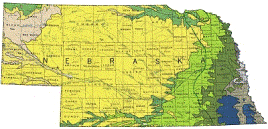United States Geological Survey

United States Geological Survey: Staff Publications
Document Type
Article
Date of this Version
2-16-2018
Citation
Wilson JL, Samaranayake VA, Limmer MA, Burken JG (2018) Phytoforensics: Trees as bioindicators of potential indoor exposure via vapor intrusion. PLoS ONE 13(2): e0193247. https://doi. org/10.1371/journal.pone.0193247
Abstract
Human exposure to volatile organic compounds (VOCs) via vapor intrusion (VI) is an emerging public health concern with notable detrimental impacts on public health. Phytoforensics, plant sampling to semi-quantitatively delineate subsurface contamination, provides a potential non-invasive screening approach to detect VI potential, and plant sampling is effective and also time- and cost-efficient. Existing VI assessment methods are time- and resourceintensive, invasive, and require access into residential and commercial buildings to drill holes through basement slabs to install sampling ports or require substantial equipment to install groundwater or soil vapor sampling outside the home. Tree-core samples collected in 2 days at the PCE Southeast Contamination Site in York, Nebraska were analyzed for tetrachloroethene (PCE) and results demonstrated positive correlations with groundwater, soil, soil-gas, sub-slab, and indoor-air samples collected over a 2-year period. Because treecore samples were not collocated with other samples, interpolated surfaces of PCE concentrations were estimated so that comparisons could be made between pairs of data. Results indicate moderate to high correlation with average indoor-air and sub-slab PCE concentrations over long periods of time (months to years) to an interpolated tree-core PCE concentration surface, with Spearman's correlation coefficients (ρ) ranging from 0.31 to 0.53 that are comparable to the pairwise correlation between sub-slab and indoor-air PCE concentrations (ρ = 0.55, n = 89). Strong correlations between soil-gas, sub-slab, and indoor-air PCE concentrations and an interpolated tree-core PCE concentration surface indicate that trees are valid indicators of potential VI and human exposure to subsurface environment pollutants. The rapid and non-invasive nature of tree sampling are notable advantages: even with less than 60 trees in the vicinity of the source area, roughly 12 hours of tree-core sampling with minimal equipment at the PCE Southeast Contamination Site was sufficient to delineate vapor intrusion potential in the study area and offered comparable delineation to traditional sub-slab sampling performed at 140 properties over a period of approximately 2 years.
Included in
Geology Commons, Oceanography and Atmospheric Sciences and Meteorology Commons, Other Earth Sciences Commons, Other Environmental Sciences Commons

